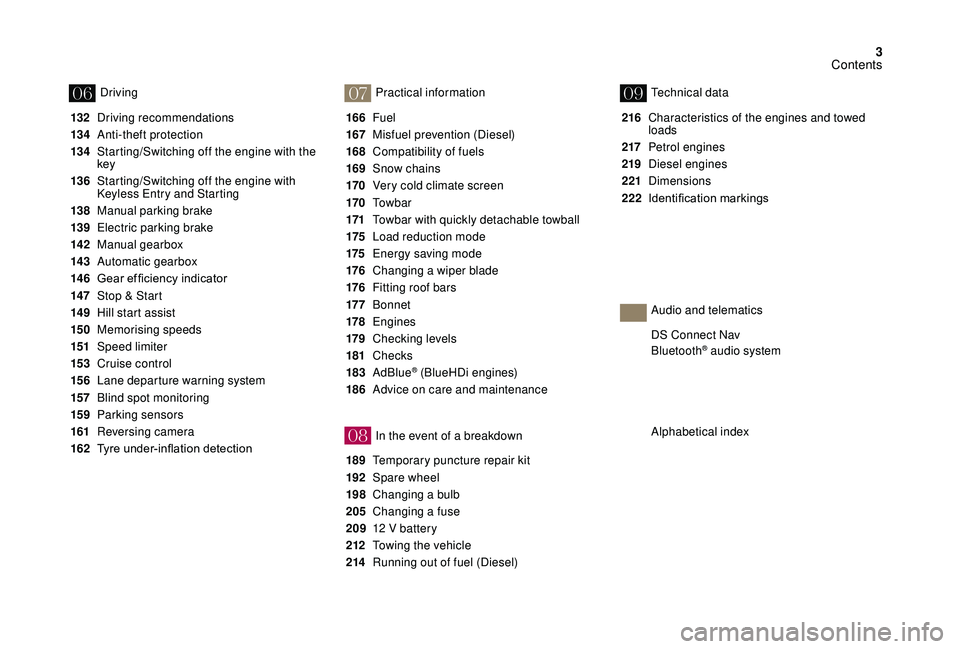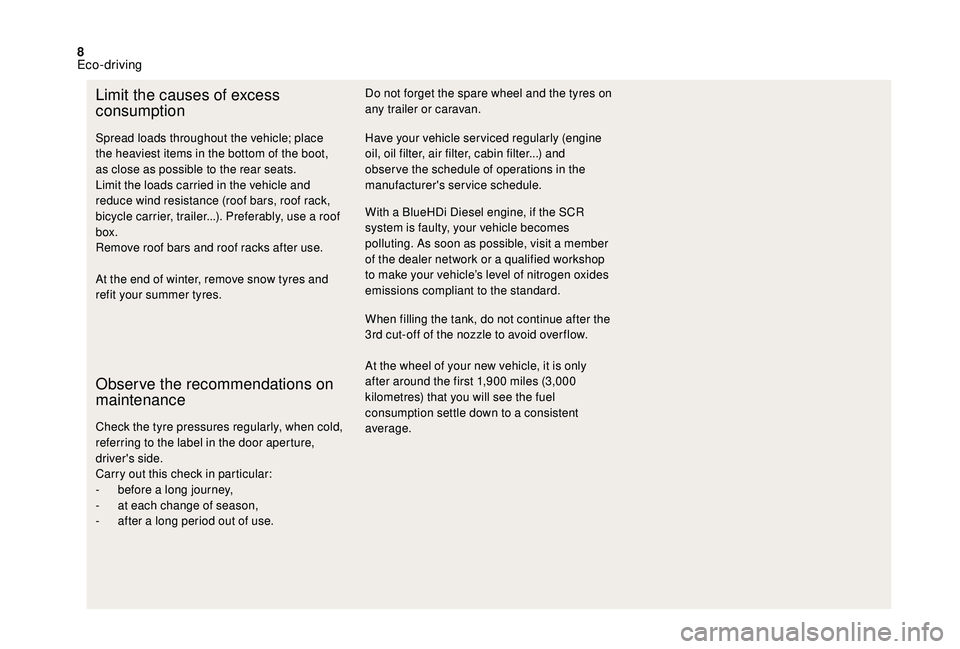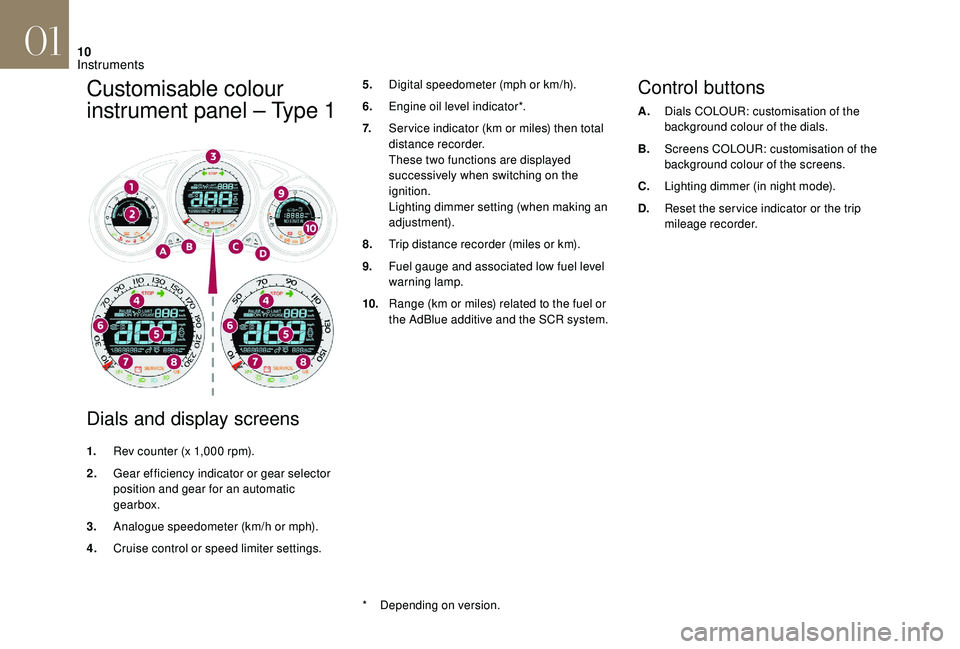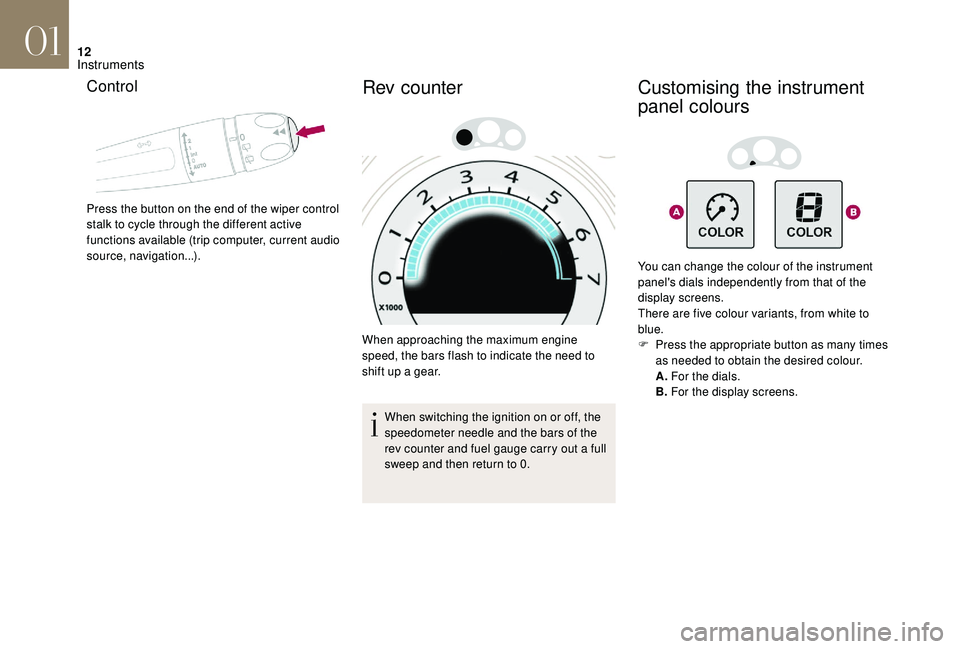engine CITROEN DS4 2018 Owners Manual
[x] Cancel search | Manufacturer: CITROEN, Model Year: 2018, Model line: DS4, Model: CITROEN DS4 2018Pages: 296, PDF Size: 9.91 MB
Page 5 of 296

3
07
08
0609
132 Driving recommendations
13 4
A
nti-theft protection
13 4
S
tarting/Switching off the engine with the
key
136
S
tarting/Switching off the engine with
Keyless Entry and Starting
138
M
anual parking brake
139
E
lectric parking brake
142
M
anual gearbox
14 3
Aut
omatic gearbox
14 6 Gear
ef ficiency indicator
14
7
St
op & Start
14 9
H
ill start assist
15 0
M
emorising speeds
151
Spe
ed limiter
15 3
C
ruise control
15 6
L
ane departure warning system
157
B
lind spot monitoring
15 9
P
arking sensors
161
R
eversing camera
162 Tyre
under-inflation detection 166
Fuel
167
M
isfuel prevention (Diesel)
168
C
ompatibility of fuels
169
S
now chains
170
V
ery cold climate screen
170
T
o w b a r
171
T
owbar with quickly detachable towball
175
L
oad reduction mode
175
E
nergy saving mode
176
C
hanging a wiper blade
176
F
itting roof bars
17 7
B
onnet
178
E
ngines
179
Ch
ecking levels
181
Checks
183
AdBlue
® (BlueHDi engines)
186
A
dvice on care and maintenance
189
T
emporary puncture repair kit
192
S
pare wheel
198
C
hanging a bulb
205
C
hanging a fuse
209
1
2 V battery
212
T
owing the vehicle
214
R
unning out of fuel (Diesel) 216
C
haracteristics of the engines and towed
loads
217
Pe
trol engines
219
D
iesel engines
221
Dimensions
222 Identification
ma
rkings
Driving
Practical information
In the event of a breakdownTechnical data
Alphabetical index DS Connect Nav
Bluetooth
® audio system
Audio and telematics
Contents
Page 7 of 296

5
Multifunction steering wheel1
Lighting controls
Direction indicators
2
Headlamp beam height adjustment
3
Speed limiter
Cruise control
Memorising speeds
4
Instrument panels
Indicator and warning lamps
Indicators
Distance recorders
5
Horn
6
Wiper control stalk
Trip computer
7
Starting – Switching off the engine
8
Steering wheel adjustment
Central switch panel
1
Hazard warning lamps
2
Central locking
3
Black panel (comfortable night driving
display)
Over view
Page 9 of 296

7
Eco-driving
Eco-driving is a range of everyday practices
that allow the motorist to optimise their fuel
consumption and CO
2 emissions.
Optimise the use of your gearbox
With a manual gearbox, move off gently
and change up without waiting. During
acceleration, change up early.
With an automatic gearbox, give preference
to automatic mode and avoid pressing the
accelerator pedal heavily or suddenly.
The gear efficiency indicator invites you to
engage the most suitable gear: as soon as the
indication is displayed in the instrument panel,
follow it straight away.
For vehicles fitted with an automatic gearbox,
this indicator appears only in manual mode.
Drive smoothly
Maintain a safe distance between vehicles,
use engine braking rather than the
brake pedal, and press the accelerator
progressively. These practices contribute
towards a reduction in fuel consumption and
CO
2 emissions and also help reduce the
background traffic noise.
If your vehicle has cruise control, make use of
the system at speeds above 25 mph (40 km/h)
when the traffic is flowing well.
Control the use of your electrical
equipment
Before moving off, if the passenger
compartment is too warm, ventilate it by
opening the windows and air vents before
using the air conditioning.
Above around 30 mph (50 km/h), close the
windows and leave the air vents open.
Consider using equipment that can help
keep the temperature in the passenger
compartment down (sunroof blind and window
blinds...).
Unless it has automatic regulation, switch off
the air conditioning as soon as the desired
temperature has been reached. Switch off the headlamps and front foglamps
when the ambient light level does not require
their use.
Avoid running the engine before moving off,
particularly in winter; your vehicle will warm up
much faster while driving. Switch off the demisting and defrosting
controls, if these are not automatically
managed.
Switch off the heated seat as soon as possible.
As a passenger, if you avoid connecting your
multimedia devices (film, music, video game
etc.), you will contribute towards limiting the
consumption of electrical energy, and so of
fuel.
Disconnect your portable devices before
leaving the vehicle.
Eco-driving
Page 10 of 296

8
Limit the causes of excess
consumption
Spread loads throughout the vehicle; place
the heaviest items in the bottom of the boot,
as close as possible to the rear seats.
Limit the loads carried in the vehicle and
reduce wind resistance (roof bars, roof rack,
bicycle carrier, trailer...). Preferably, use a roof
box.
Remove roof bars and roof racks after use.
At the end of winter, remove snow tyres and
refit your summer tyres.
Observe the recommendations on
maintenance
Check the tyre pressures regularly, when cold,
referring to the label in the door aperture,
driver's side.
Carry out this check in particular:
-
b
efore a long journey,
-
a
t each change of season,
-
a
fter a long period out of use. Have your vehicle ser viced regularly (engine
oil, oil filter, air filter, cabin filter...) and
obser ve the schedule of operations in the
manufacturer's service schedule.
With a BlueHDi Diesel engine, if the SCR
system is faulty, your vehicle becomes
polluting. As soon as possible, visit a member
of the dealer network or a qualified workshop
to make your vehicle’s level of nitrogen oxides
emissions compliant to the standard.
When filling the tank, do not continue after the
3rd cut-off of the nozzle to avoid over flow.
At the wheel of your new vehicle, it is only
after around the first 1,900 miles (3,000
kilometres) that you will see the fuel
consumption settle down to a consistent
average. Do not forget the spare wheel and the tyres on
any trailer or caravan.
Eco-driving
Page 12 of 296

10
Customisable colour
instrument panel – Type 1
Dials and display screens
5.Digital speedometer (mph or km/h).
6. Engine oil level indicator*.
7. Ser vice indicator (km or miles) then total
distance recorder.
These two functions are displayed
successively when switching on the
ignition.
Lighting dimmer setting (when making an
adjustment).
8. Trip distance recorder (miles or km).
9. Fuel gauge and associated low fuel level
warning lamp.
10. Range (km or miles) related to the fuel or
the AdBlue additive and the SCR system.Control buttons
A.Dials COLOUR: customisation of the
background colour of the dials.
B. Screens COLOUR: customisation of the
background colour of the screens.
C. Lighting dimmer (in night mode).
D. Reset the ser vice indicator or the trip
mileage recorder.
1. Rev counter (x 1,000 rpm).
2. Gear efficiency indicator or gear selector
position and gear for an automatic
gearbox.
3. Analogue speedometer (km/h or mph).
4. Cruise control or speed limiter settings.
*
D
epending on version.
01
Instruments
Page 13 of 296

11
Customisable colour
instrument panel – Type 2
Dials and display screens
1.Rev counter (x 1,000 rpm).
2. Gear efficiency indicator or gear selector
position and gear for an automatic
gearbox.
3. Speedometer (mph or km/h).
4. Central screen.
Control buttons
A.Dials COLOUR: customisation of the
background colour of the dials.
B. Screens COLOUR: customisation of the
background colour of the screens.
C. Lighting dimmer (in night mode).
D. Start a manual test (procedure for
checking the status of systems and
display of vehicle alerts).
Reset the ser vice indicator or the trip
mileage recorder.
Type 2 instrument panel
central screen and controls
Display zones
5.Fuel gauge and associated low fuel level
warning lamp.
6. Trip distance recorder (miles or km).
7. Ser vice spanner (if a ser vice is due or
missed),
Total distance recorder (miles or km).
1.Cruise control or speed limiter settings.
2. Engine oil level indicator*.
Service indicator.
Range indicators (miles or km) related
to the AdBlue and the SCR system
(BlueHDi).
Trip computer.
Current audio source playing.
Repeat of the navigation instruction.
Repeat of the vehicle's speed.
Alert or information messages can also be
displayed temporarily.
*
D
epending on version.
01
Instruments
Page 14 of 296

12
Control
Press the button on the end of the wiper control
stalk to cycle through the different active
functions available (trip computer, current audio
source, navigation...).
Rev counter
When approaching the maximum engine
speed, the bars flash to indicate the need to
shift up a gear.When switching the ignition on or off, the
speedometer needle and the bars of the
rev counter and fuel gauge carry out a full
sweep and then return to 0.
Customising the instrument
panel colours
You can change the colour of the instrument
panel's dials independently from that of the
display screens.
There are five colour variants, from white to
blue.
F
P
ress the appropriate button as many times
as needed to obtain the desired colour.
A. For the dials.
B. For the display screens.
01
Instruments
Page 15 of 296

13
Warning and indicator lamps
Visual indicators informing the driver that a
system is in operation, switched off (on/off
indicator lamps) or has a fault (warning lamp).
When the ignition is switched on
Certain warning lamps come on for a few
seconds in the instrument panel when the
vehicle's ignition is switched on.
When the engine is started, these warning
lamps should go off.
If they remain on, before driving refer to the
information on the warning lamp concerned.
Associated warnings
The switching on of certain warning lamps may
be accompanied by an audible signal and a
message.
There are two types of lighting for warning
lamps, fixed (continuous) or flashing.Some warning lamps may present both
types: fixed or flashing.
Only by relating the type of lighting to the
operating state of the vehicle can it be
decided whether the situation is normal or
whether a fault has occurred. In the event
of a fault, the illumination of the warning
lamp may be accompanied by a message.
Warning lamps
When the engine is running or the vehicle is
being driven, illumination of one of the following
warning lamps indicates a fault which requires
action on the part of the driver.
Any fault resulting in the illumination of a
warning lamp must be investigated further
using the associated message.
If you encounter any problems, contact the
dealer network or a qualified workshop.
Operation indicator lamps
The lighting of one of the following indicator
lamps confirms that the corresponding system
is on.
Deactivation indicator lamp
If this indicator lamp comes on, this confirms
that the corresponding system has been
switched off intentionally.
This may be accompanied by an audible signal
and a message being displayed.
01
Instruments
Page 16 of 296

14
Warning/indicator lampStateCause Action/Observations
STOP Fixed, alone or
associated with
another warning
lamp, accompanied
by an audible signal
and a message in the
screen. Illumination of this warning lamp is
associated with a serious fault with
the braking system, power steering,
engine lubrication system or cooling
system.
Stop as soon as it is safe to do so as there is a risk
that the engine will cut out while driving.
Park, switch off the ignition and call the dealer network
or a qualified workshop.
Maximum
coolant
temperature Fixed.
The temperature of the cooling
system is too high. You must stop as soon as it is safe to do so.
Wait until the engine has cooled down before
topping up the level, if necessary.
If the problem persists, contact the dealer network or
a
qualified workshop.
Engine oil
pressure Fixed.
There is a fault with the engine oil
lubrication circuit. You must stop as soon as it is safe to do so.
Park, switch off the ignition and contact the dealer
network or a qualified workshop.
Seat belt not
fastened/
unfastened *Fixed, then flashing,
accompanied by an
increasing audible
signal. The driver or front passenger has
not fastened or has unfastened their
seat belt.
At least one rear passenger has
unfastened their seat belt. Pull on the belt in question and insert the tongue in the
buckle.
This warning repeats the seat belt information given by
the roof console warning lamps.
*
D
epending on the country of sale.
01
Instruments
Page 17 of 296

15
Warning/indicator lampStateCause Action/Observations
Battery charge Fixed. The battery charging circuit has a
fault (dirty or loose terminals, slack or
cut alternator belt, etc.). The warning lamp should go off when the engine is
started.
If it does not go off, contact the dealer network or a
qualified workshop.
Parking brake Fixed. The parking brake is applied or not
properly released. Release the parking brake to switch off the warning
lamp, keeping your foot on the brake pedal.
Observe the safety recommendations.
For more information on the manual or electric parking
brake, refer to the corresponding section.
Electric parking
brake Flashing.
The electric parking brake is not
applied automatically.
The application/release is faulty. You must stop as soon as it is safe to do so.
Park on flat level ground, engage a gear (or place the
lever in position P for an automatic gearbox), switch
off the ignition and contact the dealer network or a
qualified workshop.
01
Instruments